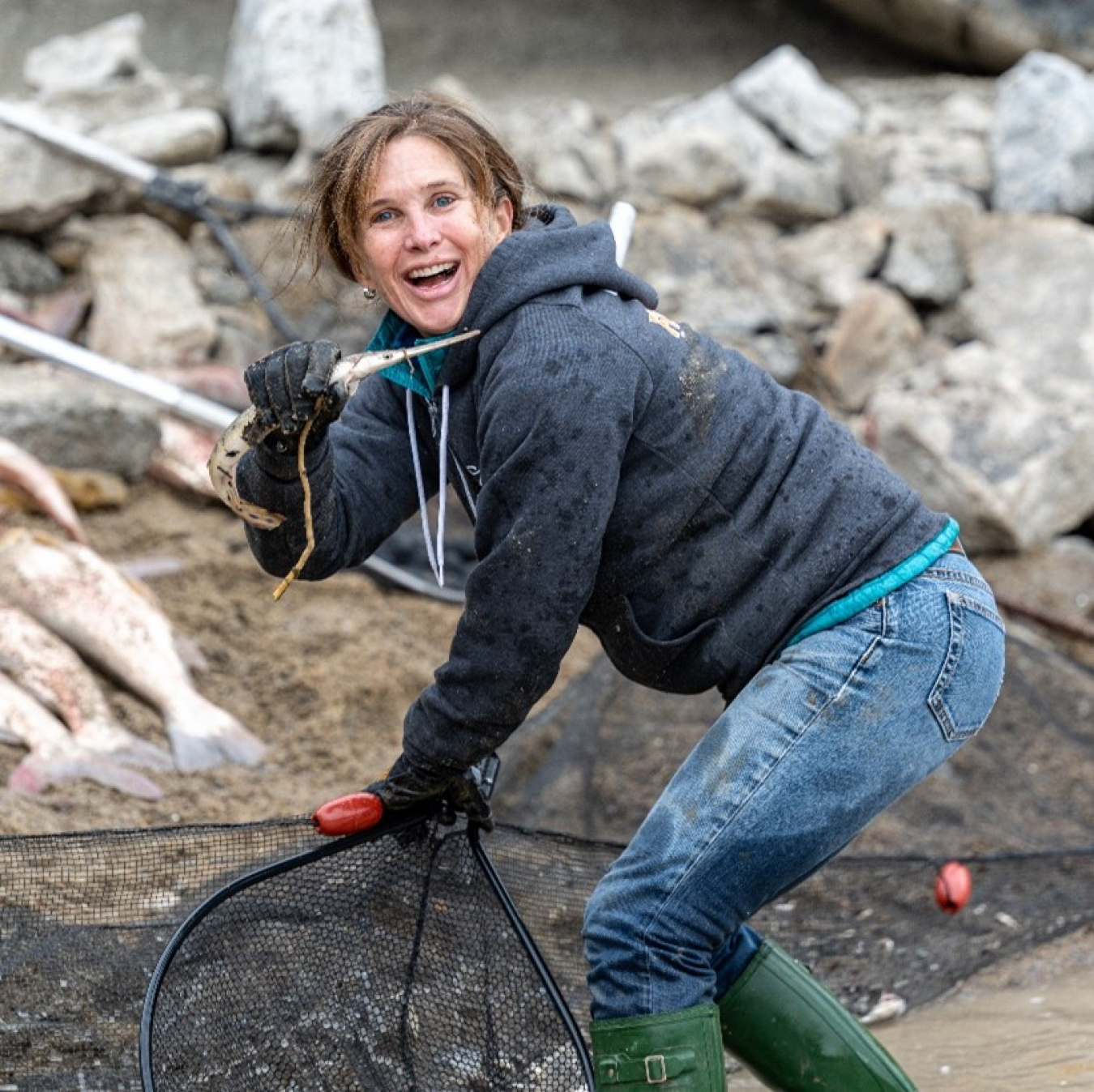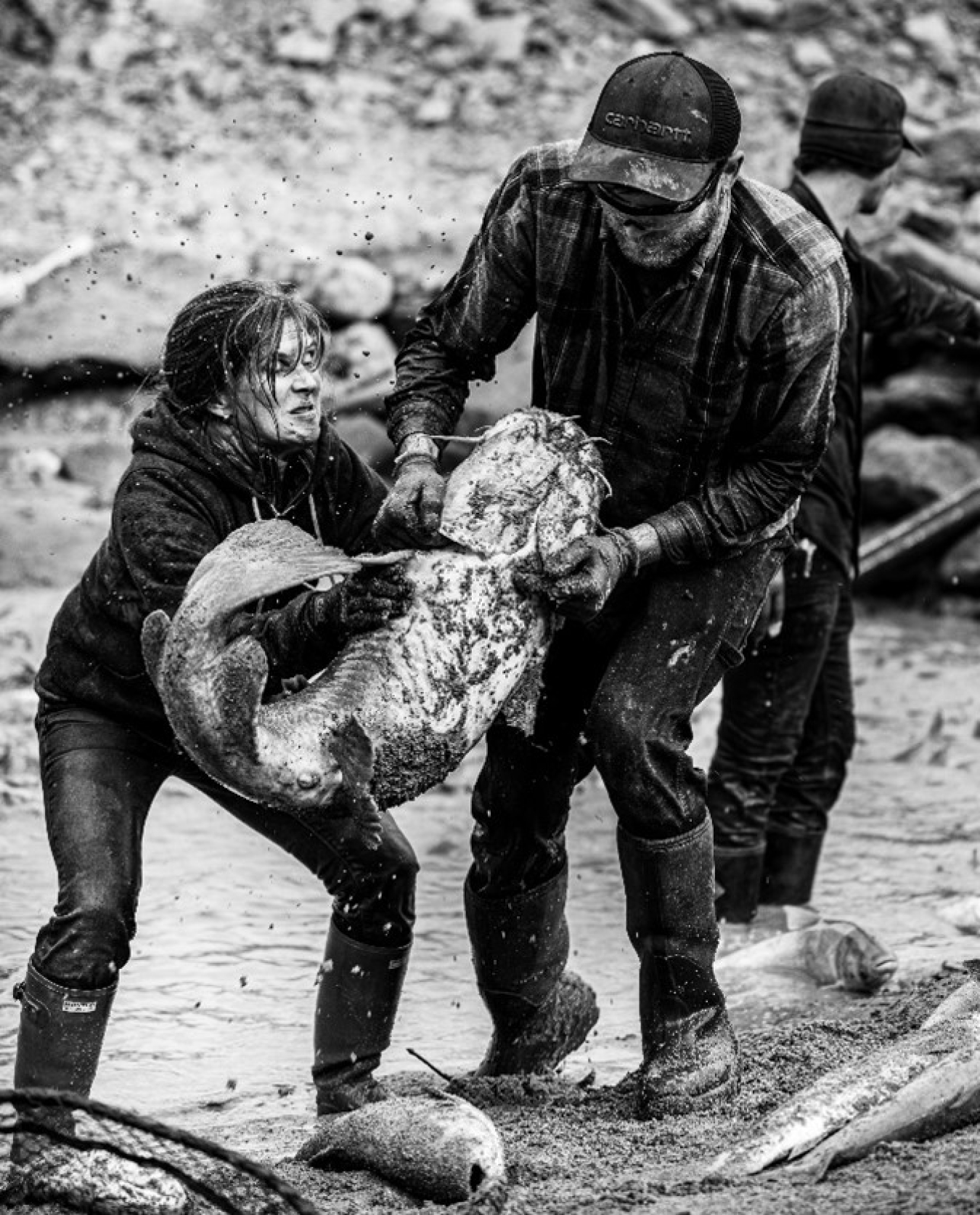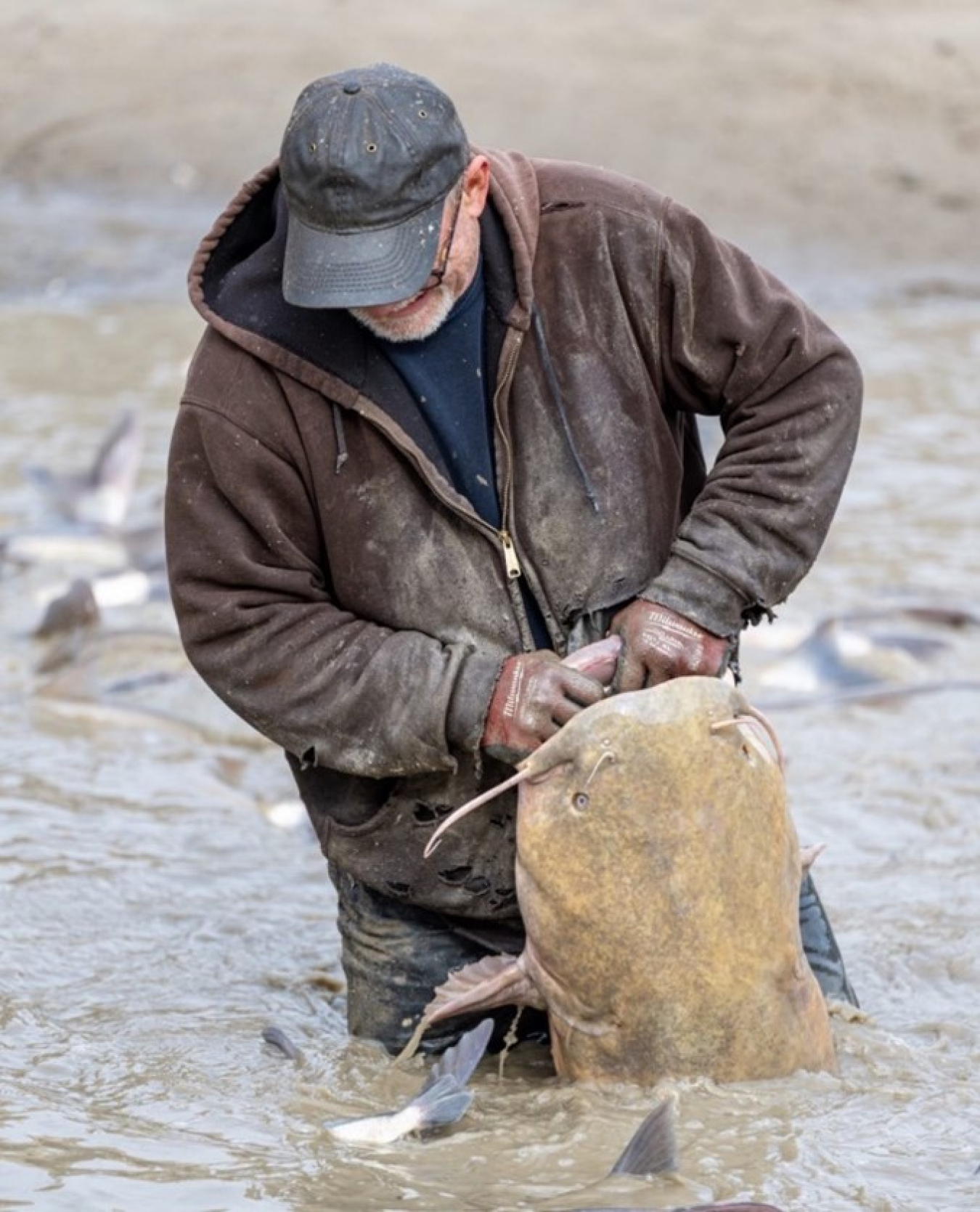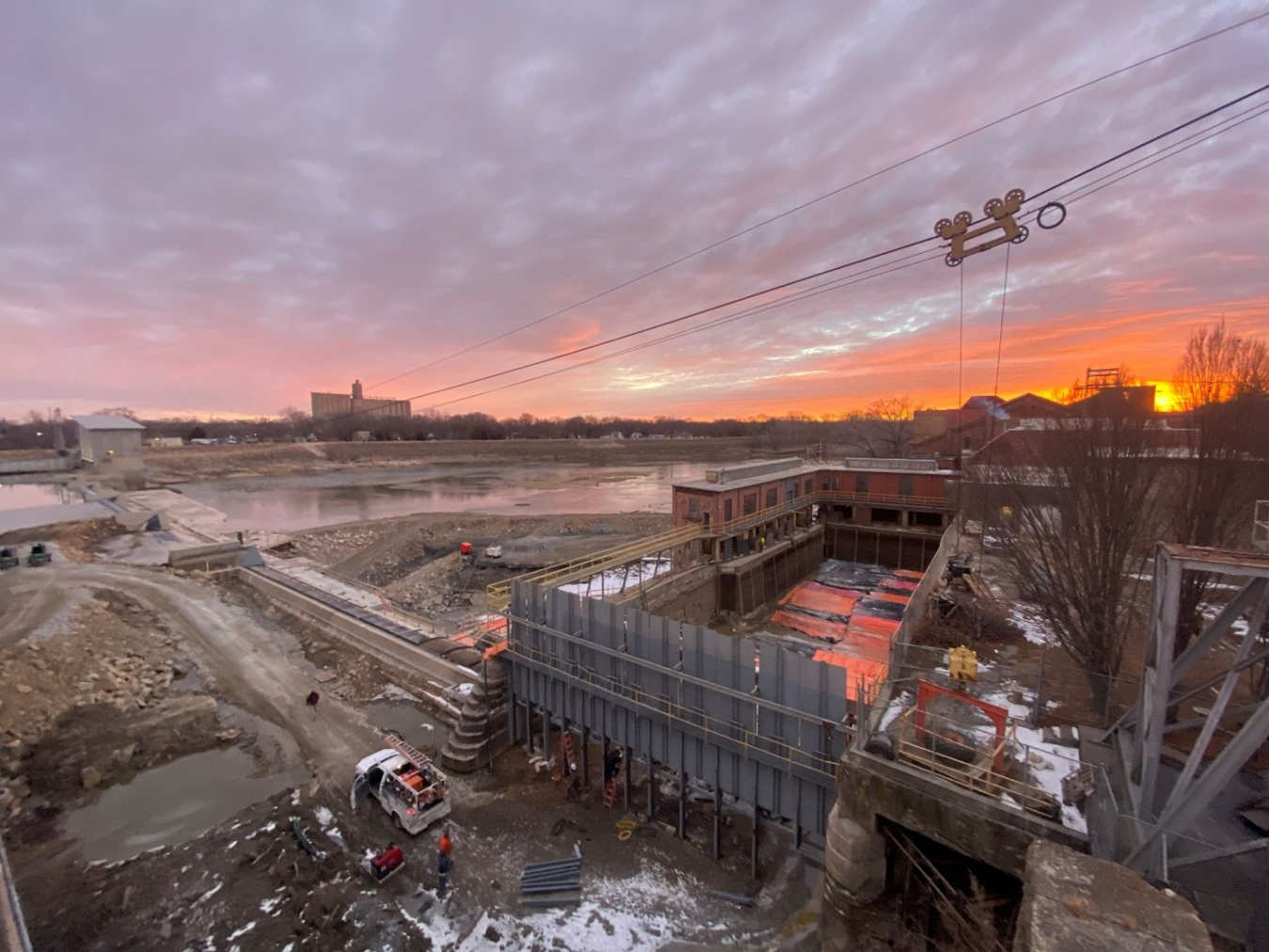How recent upgrades to the Bowersock Mills Hydropower Facility provide Lawrence, Kansas with much more than power.
April 11, 2023
How Recent Upgrades to the Bowersock Mills Hydropower Facility Provide Lawrence, Kansas with Much More Than Power
In 2021, workers at the Kansas River-based hydropower facility, The Bowersock Mills & Power Company, began a major rehabilitation of their South Powerhouse. To get to the dam’s foundations, they pumped out all the water. And there, beneath its deteriorating and honeycombed base, they found a whole aquatic ecosystem flush with fish as small as a pinky finger and as big as the workers themselves.
Even though Sarah Hill-Nelson, who has managed The Bowersock Mills & Power Company's facility alongside her father since 2002, her team, and local anglers all knew some big catfish lived under the dam, the quantity and heft of the fish shocked them.
“They were too big to carry,” Hill-Nelson said.
With help from some heavy equipment, the crew did carry the monstrous cats, releasing them downriver. Then, when they completed construction, they built new catfish habitat right next to their facility, so the bottom-dwellers could continue to thrive in their native Kansas River.
The case of the catfish is more than just a fish-friendly story—it’s one of several examples of how The Bowersock Mills & Power Company provides more than just clean energy. The 130-year-old low-impact hydropower facility not only generates enough energy to power about 3,500 homes in Northeast Kansas. Their dam also supports two bridges, and their reservoir provides about 50% of the city’s water supply, plus access to fishing and canoeing. (Even the University of Kansas’ women’s rowing team practices on the pond.)
Not too long ago, The Bowersock Mills & Power Company almost shut its turbines down for good. Fortunately, Bowersock was able to take advantage of a federally funded hydroelectric incentives program to keep the project online.


Hydropower already plays a key role in the U.S. power grid, generating about 31% of the country’s renewable electricity. But this affordable, flexible, on-demand power source will be especially valuable for a future power grid that runs on more variable energy sources, like solar power and wind energy. Hydropower can serve as a reliable back-up, filling energy gaps and even rebooting a grid after a blackout.
There’s just one problem. Most of the country’s hydropower facilities are more than 50 years old. And although modern upgrades could help make them more efficient and environmentally friendly, some owners can’t afford to make these changes on their own.
With support from DOE’s Hydroelectric Production Incentives, Hill-Nelson was able to upgrade Bowersock’s South Powerhouse, which was originally built in 1905. The facility, Hill-Nelson said, is likely one of the earliest hydropower plants built west of the Mississippi River. Construction started in 1874 when residents of Lawrence ran out of local timber and coal and discovered their natural gas contained too much helium. With no other energy sources available, the city turned to the powerful Kansas River, known locally as the Kaw.
Work on the Bowersock’s South Powerhouse was supported through DOE’s Water Power Technologies Office within the Office of Energy Efficiency and Renewable Energy. The Bipartisan Infrastructure Law, implemented in 2021, expanded funding for the Hydroelectric Production Incentives and provided funding for two additional incentives, the Hydroelectric Efficiency Improvement Incentives and Maintaining and Enhancing Hydroelectricity incentives. These three incentives together create the Hydroelectric Incentives Program now administered through DOE’s Grid Deployment Office.
“Had we not had funding from DOE’s Hydroelectric Production Incentives, I don’t think we’d be here today,” Hill-Nelson said.
After violent floods ripped apart early efforts to build a dam across the Kaw, Hill-Nelson’s great-great-grandfather took over in the late 1870s. “He was able to make the dam hold,” Hill-Nelson said. Once the facility was up and running, it powered the family’s flour mill, the source of the country’s first boxed cake mix, according to Hill-Nelson. The hydropower plant also provided other businesses in downtown Lawrence with mechanical power—in their basements, generators ran on pulley systems that connected directly to the plant’s spinning turbines.
Then, in the epic flood of 1903, driftwood and powerful waters ripped the powerhouse off its foundations, dragging all those pulley systems and generators deep into the Kaw. Undeterred, Hill-Nelson’s great-great grandfather, Justin DeWitt Bowersock, rebuilt the facility, which churned out clean power for the next century.
Taking over in 1972, Hill-Nelson’s father had big plans for the small facility. In 2013, they built a new powerhouse on the north side of the river, complementing the original South Powerhouse and tripling their annual electricity production. Building the new North Powerhouse also gave the facility a second energy source, which allowed them to rehabilitate the aging South Powerhouse. The old building needed a new foundation and new trash racks, repairs to its turbine pits and headgates, and other critical upgrades to safely generate clean, affordable energy.
“It was very costly,” Hill-Nelson said of the renovation.

Thanks, in part, to the funding, these upgrades were able to be made and the city of Lawrence can still access clean drinking water from the Kansas River and Northeast Kansas can access a critical source of clean energy (which is distributed through Bowersock’s power purchaser, the Kansas City Board of Public Utilities). Also, Hill-Nelson said, she’s able to provide health insurance, disability insurance, and higher wages to her three full-time staff members.
“This Incentive allowed us to finish the job properly,” Hill-Nelson said. “Now, we are ready to roll. We’ve done all the big, scary stuff.” The incentive payment from the latest round of funding will support the installation of an enclosed cooling system for the North Powerhouse, which will make that facility more efficient.
The Bowersock facility is a run-of-river-style hydropower plant, which means it harnesses the natural flow of the Kaw utilizing 11 hydroelectric turbines with a 7MW capacity. The facility also holds a Low Impact Certification through the Low Impact Hydropower Institute, which considers criteria in eight areas: ecological flow regimes; water quality; upstream fish passage; downstream fish passage and protection; shoreline and watershed protection; threatened and endangered species protection; cultural and historic resource protection; and recreational resources.

Hill-Nelson sees even more opportunities for her facility to increase their energy output with minimal or no environmental impact. She hopes to install solar panels on the roof of one of her powerhouses and add batteries, so they can store energy to support the grid during periods of high demand.
Still, Hill-Nelson has a few worries about the future. “I do think we’re going to lose a lot of knowledge when people retire,” she said. Much of today’s hydropower workforce is nearing retirement, which means facilities like Bowersock could have a hard time filling their well-paying jobs and finding skilled laborers to repair parts. While Bowersock has a young and skilled staff, many of Bowersock’s specialty contractors are nearing retirement age. Finding those rare skilled contractors in close proximity to the facility is becoming increasingly difficult and could add cost to already expensive repairs.
According to DOE’s recently released U.S. Hydropower Workforce: Challenges and Opportunities report, the hydropower workforce currently includes more than 72,000 workers, with almost 65,000 supporting conventional hydropower. This marks a decrease in about 3,300 workers from 2019. According to the report, barriers that could be hindering workforce growth include a lack of hydropower educational programs and student awareness of the industry and an aging workforce and high rate of retirement. DOE is working to spread awareness of hydropower career opportunities and recruit students from diverse disciplines and backgrounds to the sector through programs like the Hydropower Collegiate Competition and the Clean Energy Innovator Fellowship program.
Despite these workforce challenges, Hill-Nelson is optimistic about her facility’s longevity now that federal funding has helped them make crucial upgrades. “That’ll help us be here for another 100 years,” she said.
Learn more about the Hydroelectric Production Incentives (Section 242 of EPAct 2005).
Don’t miss out on updates from the Grid Deployment Office—subscribe here to receive news—and be sure to select the Hydroelectric Incentives topic.

